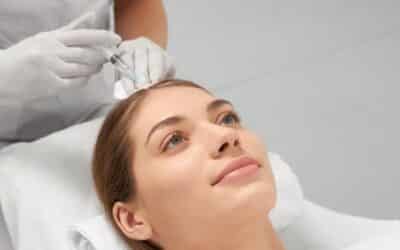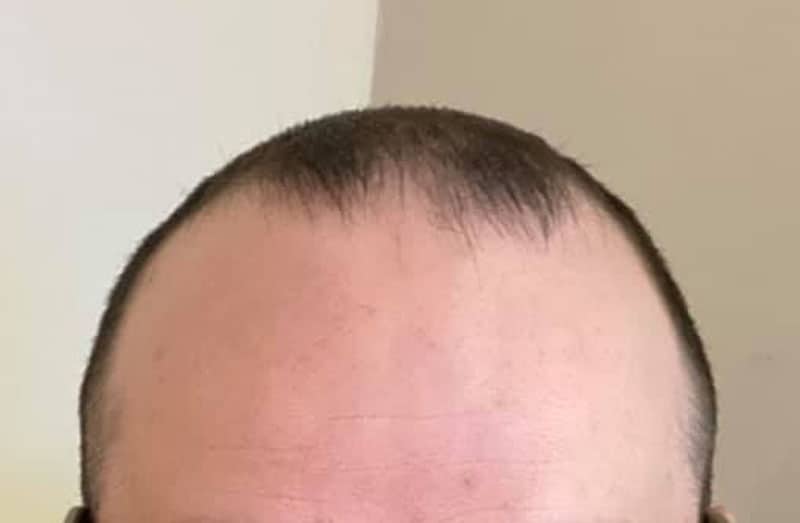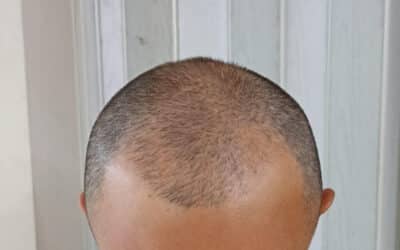At Best Hair Transplant, we scour the internet to find the most common hair restoration questions. The ones that keep getting asked by people all over social media. There’s a lot of people interested in hair restoration of all types and we wanted to make sure you have the answers you’re looking for.
Hair restoration questions are a normal part of a journey that can be overwhelming at times, and confusing at others. All your hair restoration questions are answered below. We suss out the fact from fiction, the myth from reality. Here are 20 common questions when it comes to hair restoration. If you’ve had some of these similar hair transplant questions, we hope this article will help you learn what you need to make an informed decision about booking your hair restoration goals.
Real Hair Restoration Questions
QUESTION #1
“I’ve been using Finasteride for months now. However, I’ve started to notice some side effects. The main one is a decrease in libido. Additionally, I’m having slight instances of ED (erectile dysfunction) at times. Is this normal? Is there a way to counteract these side effects?”
ANSWER #1
Unfortunately, a common side effect of Finasteride is decreased libido, inability to get or maintain an erection, and decreased sexual desire. This is due to the fact that finasteride blocks the action of an enzyme called 5-alpha-reductase. This increases testosterone levels, which decreases the prostate size while increasing hair growth. The decrease in prostate size is what is contributing to erection struggles. This side effect will usually go away if the medication is stopped, but so will any new hair growth. Some users report improvements to this side effect when they reduce their dose. Medication that is intended to address erectile dysfunction such as Viagra or Cialis may also be taken, however, you should consult with your doctor first.
QUESTION #2
“Does Anybody have tips on hair coloring? I want to do some light coloring (not bleaching) on my hair but I’m afraid it would damage my hair and I can’t afford that.”
ANSWER #2
When lightening hair it is important to work gradually in stages, especially if your hair is dark. Natural treatments such as apple cider vinegar, lemon juice, and chamomile tea can lighten the hair with minimal damage. One of the most important parts of preventing damage from hair lightening is aftercare. Regular deep conditioning treatments and shampoos and conditioners that are designed to protect dyed hair are ideal.
QUESTION #3
“Can peppermint oil and cinnamon oil really help stop hair loss or restore my lost hair?”
ANSWER #3
Peppermint essential oil contains menthol which is a vasodilator, vasodilators improve blood flow. Cinnamon oils have been known to stimulate the scalp as well. These oils also contain antiviral, antifungal, and antibacterial properties. These can protect your scalp from fungal infections that can contribute to hair loss.
A healthy scalp equals healthy hair. Reduced blood flow to hair follicles is a contributing factor in hair loss. Increasing circulation will help to stimulate new growth. Cinnamon oil is also full of antioxidants that help prevent UV damage and banish free radicals. Many apply these aromatic essential oils with a carrier oil such as pumpkin seed oil as a scalp treatment. You can either apply before bed and shampoo as normal in the morning or apply at least 15 minutes before shampooing.
QUESTION #4
“Does biotin really help with hair loss?
ANSWER #4
Also known as vitamin B7, biotin is responsible for stimulating keratin production, increasing the rate of hair follicle growth. There is little evidence to support that biotin reduces hair loss. There is no evidence the shampoos that contain biotin make any discernible difference to hair growth either. According to Gary Linkov MD, a plastic surgeon who was interviewed by WebMD, “Biotin supplementation may be helpful for people who are truly biotin-deficient, but biotin deficiency is quite rare amongst the general population.”
QUESTION #5
“Has anyone been on Propecia for several years now? If so, have you experienced any side effects or none at all?”
ANSWER #5
Side effects from Propecia (finasteride) can include erectile dysfunction, decreased libido, ejaculatory disorder, breast tenderness, swelling, male breast cancer, weakness, headache, and weakness. A March 2017 Northwestern study found that some men who took Propecia were not able to have a normal erection for months or years after stopping the medication.
According to the Northwestern study, out of 11,909 men who took finasteride, 1.4 percent developed persistent erectile dysfunction that continued after stopping treatment. Young men who were exposed to the drug for 205 days had nearly five times higher risk of persistent erectile dysfunction than men with shorter exposure.
QUESTION #6
“I’m getting a hair transplant soon. Only getting 1400 grafts towards the front of my head. How long would it be advisable to take off work for appearance purposes? I work in construction but deal with clients regularly.”
ANSWER #6
If you are undergoing an FUE hair transplant procedure you will need to shave the back and sides of the hair where the donor hairs are taken to a grade 0. It takes about 7-10 days for the hair to grow back to a length that is not seen as being too short for work. Some people may need to take as many as 14 days for the redness and scabbing at the transplant sites to heal. In general, we advise 2 weeks before returning to work.
QUESTION #7
“Does anybody know how long after H.T it would be ok to wear a helmet? I play hurling it’s a sport like hockey where the helmet will be constantly rubbing my head.”
ANSWER #7
For the first few weeks following surgery, your scalp will probably be feeling pretty tender, and you may even experience some swelling. Most likely it would be too uncomfortable to wear a helmet in the days immediately following surgery. Wearing a helmet before your sutures have healed will put you at greater risk of infection. Especially if the helmet has been used previously and contains sweat and bacteria.
It is very important that you avoid wearing anything that could be abrasive to your scalp, or irritate it while it’s healing. In general, it is not advisable that you exercise in the first 2 weeks after surgery as sharp movements in the neck can stretch out and damage any sutures. Most of the time 3 weeks is plenty of time for recovery. But always be sure to get cleared by your doctor first before resuming any sports.
QUESTION #8
“Can my birth control pills be causing my hair loss?”
ANSWER #8
One of the side effects of birth control pills can be hair loss, particularly for those who are sensitive to hormones. The hormones in birth control pills disrupt the natural hair cycle, causing it to shift from the growing phase to the resting phase, this is known as telogen effluvium. Women who are prone to hormone-induced hair loss are at higher risk, while others may find that their hair is thinner than normal.
QUESTION #9
“Does washing your hair every day cause hair loss?”
ANSWER #9
Generally speaking, no, hair loss is not caused by washing. However, there is emerging evidence that some ingredients in over-the-counter shampoo products can be a contributing factor to hair damage and or loss. When shopping for shampoos it is important to avoid products that contain the following ingredients: Sodium Lauryl Sulfate (SLS) strips hair of its essential oil and breaks down proteins that are essential for healthy hair. Sodium Chloride, also known as table salt is sometimes used as a thickener in addition to SLS but it can cause dry, itchy scalp which increases hair loss. Polyethylene glycol (also known as PEG or polyoxyethylene) is another moisture stripping ingredient to avoid.
Preservatives like formaldehyde, methylparaben, and propylparaben can affect the balance of hormones, triggering hair loss. Irritants such as diethanolamine (DEA) and triethanolamine (TEA) destroy keratin in the hair shaft and cause inflammation to the scalp. It is also important to avoid products that list alcohol as one of the first four ingredients because they can be too drying. Finally, lanolin, petroleum, and mineral oil prevent the absorption of natural oils to the hair shaft, weighing the hair down. Hair continuously goes through cycles of growth, rest, and fall. So some shedding every day is normal. However, if you notice excessive hair fall or hair falling out easily that is a sign to consult with a doctor.
QUESTION #10
“Is it true that major life events can cause hair loss?”
ANSWER #10
Yes, life events that shock the system such as childbirth, high fever, rapid weight loss, surgery, or even a stressful life event such as loss of a loved one or divorce can alter the natural hair growth cycle. After an intense shock or high-stress event, 30-40% of the hairs can cycle into telogen, resulting in a massive shedding, also known as effluvium. Usually, the hair is shed from the font of the scalp. Typically abrupt hair loss is noticed within a few weeks to a few months after the incident that triggered the hair loss. People that are experiencing this type of hair loss will generally notice excessive hair fall while washing, shampooing, or even gently styling the hair.
Generally, treatment is not needed for most cases of telogen effluvium. It’s important to remember that when hairs fall out there is usually a new hair growing beneath that pushing the old one out, so hair fall is actually a sign of regrowth. It is important to rule out any underlying causes that could be causing an event like this, such as an iron deficiency. A blood test is an easy way to make sure that there are no other contributing health issues.
QUESTION #11
“I really like my hair after using ketoconazole shampoo, but I’m not sure if it’s good to use it that often. Is it ok to use it daily? At the moment I am using it 3 times a week.”
ANSWER #11
Ketoconazole shampoo is commonly used for its antifungal action in order to treat infections or conditions like seborrheic dermatitis. There is some evidence indicating that it may help promote hair growth or reduce hair loss, but it is largely anecdotal.
A small study of 15 people with alopecia found that ketoconazole helped to promote hair growth. How often you use this shampoo depends on many factors. These include the strength of the shampoo, the condition that is being treated, and your current symptoms. Overuse can cause irritation to the scalp, so it is important to discuss with your doctor before changing the frequency of use. Most doctors recommend using Ketoconazole shampoo anywhere from once a week, to every other day, depending on the severity of your symptoms.
QUESTION #12
“Are hair transplants an option for women looking to restore their hair?
ANSWER #12
Female hair loss patterns and causes are different than they are for men. Most women experience diffuse hair loss, which is an overall thinning of the hair, as opposed to male pattern baldness where the majority of hair is lost at the front of the scalp. Female hair loss is often due to dihydrotestosterone (DHT) which shrinks hair follicles. If donor hairs are affected by DHT, a transplant would not be helpful because the transplanted hairs would inevitably fall out.
Women that are good candidates for hair transplantation are those who have suffered hair loss due to non-hormonal traction alopecia, those who wish to hide incision scars from cosmetic surgery such as facelifts, women who have a distinct pattern of baldness such as hairline recession, women who suffer hair loss due to trauma such as burns, or women with alopecia marginalis.
QUESTION #13
“What drugs are available for the treatment of baldness?”
ANSWER #13
Presently, there are only two approved drugs; Minoxidil lotions, which are applied to the affected area, and Finasteride tablets, also known as Propecia. Minoxidil, often known as Rogaine, was originally developed as an oral medication for high blood pressure, it one of the early trials a curious side effect of increased hair growth was noted. Today Minoxidil is most often used as either a topical foam or serum. It comes in both a 2 percent and a 5 percent formulation. When applied to the scalp Minoxidil stimulates new hair growth, and increases the density and thickness of hair. Unfortunately, if you discontinue the use of Minoxidil you will lose any regained hair growth.
Propecia (finasteride) is an oral medication meant to treat male pattern baldness (androgenic alopecia) at the crown and middle of the scalp. This medication works by decreasing the amount of the hormone DHT. Decreasing the amount of DHT leads to increased hair regrowth. You must continue taking this medication in order to maintain new hair growth. If you stop taking finasteride any increase in hair growth is generally lost within 12 months. Side effects include decreased sexual desire and difficulty maintaining an erection. This medication can also reduce the amount of semen released during sex.
Tell your doctor if you experience any of the following serious side effects such as breast lumps, nipple discharge, pain in the testicles, or inability to urinate. While serious allergic reactions are unlikely, it is important to seek medical attention if you experience the following: rash, itching, swelling (especially of the face/tongue/throat), severe dizziness, and trouble breathing. These two treatment options are generally regarded as safe, but it is important to discuss your health history and any concerns with your doctor before starting either of these treatments.
QUESTION #14
“How long after a hair transplant procedure can I exercise? What about swimming?”
ANSWER #14
During the first two weeks of recovery, exercise should be avoided. Sharp movements of the neck may stretch the stitches. Damage to the sutures can cause infections, and damage to the newly transplanted hair follicles can affect their viability. If you rush too quickly to exercise or get your hair wet in a swimming pool, you run the risk of your new transplants failing. Usually, after the sutures have been removed and you’ve gotten clearance from your doctor, both exercise and swimming can be resumed.
QUESTION #15
“After a hair transplant is it better to wear my hair long or short?”
ANSWER #15
It is a myth that short hair does not fall at the same frequency as long hair. It is absolutely possible to keep your hair long if you prefer. Long hairstyles tend to work better with FUT procedures and can be helpful for hiding the incision where the donor hair strip was harvested. With FUE procedures the donor’s hairs need to be cut to 2 mm in length, which means the hair in the surrounding area of the donor site will need to be shaved. Depending on the site where the donor’s hair is taken, as well as the amount you can decide whether it would be more flattering to leave your remaining hair long or cut it short to match the shaved area.
QUESTION #16
“What is the difference between hair loss from the root, and hair loss caused by breakage?”
ANSWER #16
Hair naturally goes through a cycle of growing, resting, and falling. This is generally normal. Abnormal hair shedding from the root can be attributed to heredity, hormones, stress, major life events, fevers, or nutritional deficiencies. When hair loss is caused by breakage this usually happens as a result of aggression in the hair shaft. This can be caused by harsh chemicals such as bleach or dyes, or physical aggression such as excessive heat styling.
QUESTION #17
“Do brushes, flat iron, and other tools make your hair fall out?”
ANSWER #17
Yes! These styling tools increase the capillary temperature to 347 degrees Fahrenheit which promotes rapid evaporation of water from inside the capillary stem. This damages the hair from the inside, shortening its life cycle and promoting increased hair fall. However, you don’t need to give up heat styling all together if you mind the following guidelines.
Choose hairstyling tools with ceramic plates, air heat, and products that boast heat protection. Skip metal tools and any product that has no temperature control setting, as these are the most likely to over-dry your hair. Heat protection sprays with either meadowfoam seed oil or wheat protein can also provide your hair with added protection, and lock in moisture.
QUESTION #18
“Does the use of hair extensions, tight braids, and very strong ponytails make your hair fall out?”
ANSWER #18
Yes. Continued traction of these hairstyles can cause hair to fall out. If the process is maintained for a long time, definitive hair loss known as traction alopecia can occur. With traction alopecia hair usually recedes at the hairline and temples. The good news is that this condition is treatable and responds well to most hair restoration methods including hair transplants and LLLT therapy. Depending on the severity of your hair loss you may be able to replenish your hairline through the use of topical treatments like minoxidil and by changing up your hair care routine to incorporate gentler techniques.
QUESTION #19
“Is it true that if a woman breastfeeds, she will lose more hair in the postpartum period?”
ANSWER #19
Actually, the evidence suggests that the opposite is true. Studies have shown that the percentage of hair loss when a woman breastfeeds is lower than when she does not. Pregnancy hormones increase the length of the growth phase and therefore more hair tends to fall out during the first 6 months postpartum. This condition tends to normalize within a year. Good nutrition, hydration, regular exercise, and stress management can help to minimize the impacts of this hair loss phase. Reducing the use of heat styling tools, tight hairstyles, and hair products with low-quality ingredients can help protect your hair as well.
QUESTION #20
“Can hormone replacement therapy help menopausal women experiencing hair loss?”
ANSWER #20
Hormone replacement therapy may help with thinning hair due to the hormone changes of menopause. Estrogen replacement therapy can help bring hormones back into balance. Increased estrogen helps the hair stay in the growing phase for longer, it can also counter the follicle-shrinking effects that DHT can have on your hair follicles. Studies have shown that hormone replacement therapy that is started at the first signs of menopause can help women maintain hair density.
THE BEST HAIR TRANSPLANTS IN LA
Best Hair Transplant is the best place to schedule your hair transplant in Los Angeles. But don’t take our word for it. We suggest learning as much as possible about hair restoration. Do so prior to making a decision on how to address your hair loss. Not every procedure is right for everyone.
At Best Hair Transplant in Redondo Beach, we pride ourselves on helping our patients choose the best procedure for them. Do your homework. Research your hair restoration doctor. After all, not all doctors are equal. For your benefit, ask to see “Before & After” photos.
At Best Hair Transplant, we’re proud of our results and happy to provide hair restoration services. Additionally, we’re proud to make hair transplants affordable and help you save money on a variety of hair transplants.
To ensure your ease of mind, you can view our customer recommendations HERE. Furthermore, you can also see our Google reviews and Yelp reviews. We can’t wait to help you start restoring your lost hair.
YOUR HAIR RESTORATION SOLUTION
Best Hair Transplant
1970 S. Prospect Ave., Suite 2
Redondo Beach, CA 90277
(213) 403-0455
References:
- https://www.emedicinehealth.com/hair_loss_quiz_iq/faq.htm#faq-3947
- https://www.ncbi.nlm.nih.gov/pmc/articles/PMC3262531/
- https://herkare.com/blog/hormone-replacement-treatment-hair-effects/
- https://www.chicgirlonline.com/hair/25-questions-and-answers-about-hair-loss/
- https://www.mayoclinic.org/drugs-supplements/finasteride-oral-route/side-effects/drg-20063819?p=1
- https://www.frommars.com/uk/blog/hair/how-to-reduce-the-side-effects-of-finasteride
- https://www.johnfrieda.com/en-us/blog/blonde-hair/how-to-lighten-hair/
- https://www.24mantra.com/blogs/organic-lifestyle/how-to-use-cinnamon-oil-for-fighting-hair-loss/
- https://www.webmd.com/connect-to-care/hair-loss/does-biotin-really-prevent-hair-loss
- https://www.drugwatch.com/propecia/side-effects/
- https://www.treatmentroomslondon.com/when-can-you-go-back-to-work-after-a-hair-transplant/
- https://www.realself.com/question/wearing-helmet-after-weeks-fut
- https://asghairtransplant.com/blog/2020/10/02/when-person-can-wear-a-helmet-after-hair-transplant/
- https://www.ncbi.nlm.nih.gov/pmc/articles/PMC3262531/
- https://www.aocd.org/page/telogeneffluviumha
- https://www.byrdie.com/minoxidil-for-hair-growth-4769934
- https://furthermore.equinox.com/articles/2016/06/heat-hair-gadgets
- https://blog.aarp.org/be-your-best/is-your-shampoo-causing-hair-loss-try-these-tips-from-a-specialist
- https://www.webmd.com/drugs/2/drug-5471/propecia-oral/details
- https://www.healthline.com/health/peppermint-oil-for-hair#:~:text=Increasing%20circulation%20with%20a%20vasodilator,oil%20to%20your%20beauty%20products












